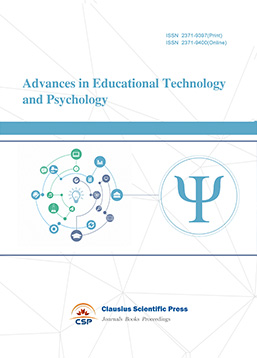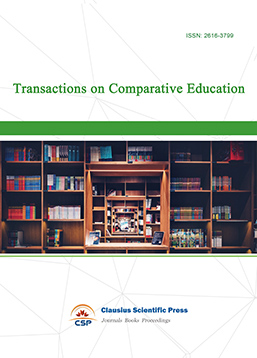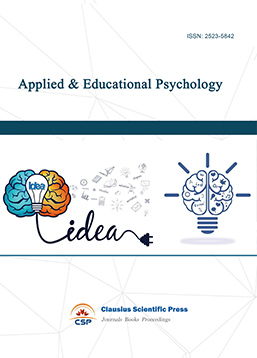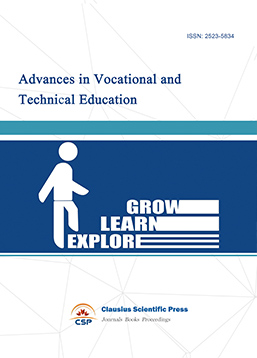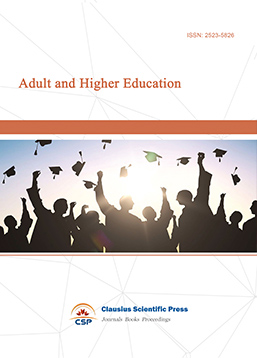Innovative Practice of Architectural Design Courses Based on School-Enterprise Cooperation
DOI: 10.23977/curtm.2025.080701 | Downloads: 8 | Views: 208
Author(s)
Yiyang Zhao 1
Affiliation(s)
1 College of Intelligent Science and Engineering, Xi'an Peihua University, Xi'an, 710100, Shaanxi, China
Corresponding Author
Yiyang ZhaoABSTRACT
Current architectural design courses face widespread practical challenges, including insufficient hands-on skills, a disconnection from real-world project examples, and a limited evaluation system. These challenges make it difficult to meet the industry's demand for application-oriented and innovative talent. This paper aims to innovate the architectural design curriculum through a school-enterprise collaboration model, enhancing students' comprehensive skills and project-based competence. The research methodology includes: first, establishing a joint school-enterprise teaching team to jointly develop the course syllabus and training objectives; second, introducing real-world enterprise projects as course examples, with students working in groups to complete scheme design, modeling, and construction drawing production; third, establishing a phased evaluation mechanism, including classroom performance (20%), scheme innovation (30%), technical application ability (30%), and comprehensive assessment by the enterprise mentor (20%); fourth, collecting student feedback through questionnaires and interviews, and analyzing teaching effectiveness based on performance data. Results show that the accuracy of construction drawings for students participating in this course increased to 92%, the scheme pass rate increased to 93%, and student satisfaction reached 96%. The average score of the students' professional competence given by the enterprise mentors is 4.5 out of 5. Teaching innovation through school-enterprise cooperation has effectively addressed the disconnect between traditional courses and industry needs, significantly enhancing the development of students' practical and innovative abilities, and providing a replicable path and empirical reference for reforming architectural courses.
KEYWORDS
School-Enterprise Cooperation; Architectural Design Courses; Practical Teaching; Curriculum Innovation; Talent TrainingCITE THIS PAPER
Yiyang Zhao, Innovative Practice of Architectural Design Courses Based on School-Enterprise Cooperation. Curriculum and Teaching Methodology (2025) Vol. 8: 1-8. DOI: http://dx.doi.org/10.23977/curtm.2025.080701.
REFERENCES
[1] Liu Runfang. Research on innovative teaching methods of ceramics in secondary vocational architectural design courses [J]. Ceramic Science and Art, 2025, 59(1): 46-47
[2] Cao Maoqing, Zhang Yunying, Song Xue, Li Riqiang, Liu Weiqi. Innovation and practice of teaching in higher vocational architectural design courses based on the "four-wheel drive" mechanism under the background of industry-education integration [J]. Vocational Technology, 2024, 23(4): 94-102
[3] Long Hao, Tian Qi, Meng Yang. Incisive and innovative housing - "Residential Building Design" of Chongqing University's architecture major Breakthrough and innovation in curriculum teaching reform [J]. Architectural Skills (Chinese and English), 2024, 30(7): 58-62
[4] Yue Hua. Practical innovation of digital teaching form - taking the introductory course of architectural design as an example [J]. Central China Architecture, 2024, 42(1): 163-166
[5] Cao Maoqing, Wen Lin, Li Yubao. Innovation and practice of architectural design curriculum system in higher vocational colleges under the background of BIM drive, "trinity" and collaborative education [J]. Vocational Technology, 2022, 21(5): 96-101
[6] Qureshi H. Collaborative architectural design studio environment: An experiment in the studio of Architectural Design-I[J]. Archnet-IJAR: International Journal of Architectural Research, 2020, 14(2): 303-324.
[7] Saghafi M R. Teaching strategies for linking knowledge acquisition and application in the architectural design studio[J]. Archnet-IJAR: International Journal of Architectural Research, 2021, 15(2): 401-415.
[8] Auernhammer J, Roth B. The origin and evolution of Stanford University's design thinking: From product design to design thinking in innovation management[J]. Journal of Product innovation management, 2021, 38(6): 623-644.
[9] Burton L O, Salama A M. Sustainable Development Goals and the future of architectural education–cultivating SDGs-centred architectural pedagogies[J]. Archnet-IJAR: International Journal of Architectural Research, 2023, 17(3): 421-442.
[10] De Borba G S, Alves I M, Campagnolo P D B. How learning spaces can collaborate with student engagement and enhance student-faculty interaction in higher education[J]. Innovative Higher Education, 2020, 45(1): 51-63.
[11] Zhou Y, Xu G. Vocational school–enterprise cooperation in China: A review of policy reforms, 1978–2022[J]. ECNU Review of Education, 2023, 6(3): 433-450.
[12] Bian F, Wang X. School enterprise cooperation mechanism based on improved decision tree algorithm[J]. Journal of Intelligent & Fuzzy Systems, 2021, 40(4): 5995-6005.
[13] Deng B, Rattanasiraprapha N. THE SCHOOL-ENTERPRISE COOPERATION IN HIGHER VOCATIONAL EDUCATION OF GUANGDONG PROVINCE[J]. Journal of MCU Philosophy Review, 2025, 8(1): 367-374.
[14] Wang Y. The Mode of School-Enterprise Cooperation to Solve the Talent Dilemma of Small and Micro Enterprises[J]. Adult and Higher Education, 2022, 4(14): 36-42.
[15] Qin Q, Lei Y. Research on existing problems and countermeasures in school-enterprise cooperation in private higher vocational colleges[J]. Journal of Education and Educational Research, 2024, 7(1): 222-226.
| Downloads: | 40327 |
|---|---|
| Visits: | 1749897 |

 Download as PDF
Download as PDF